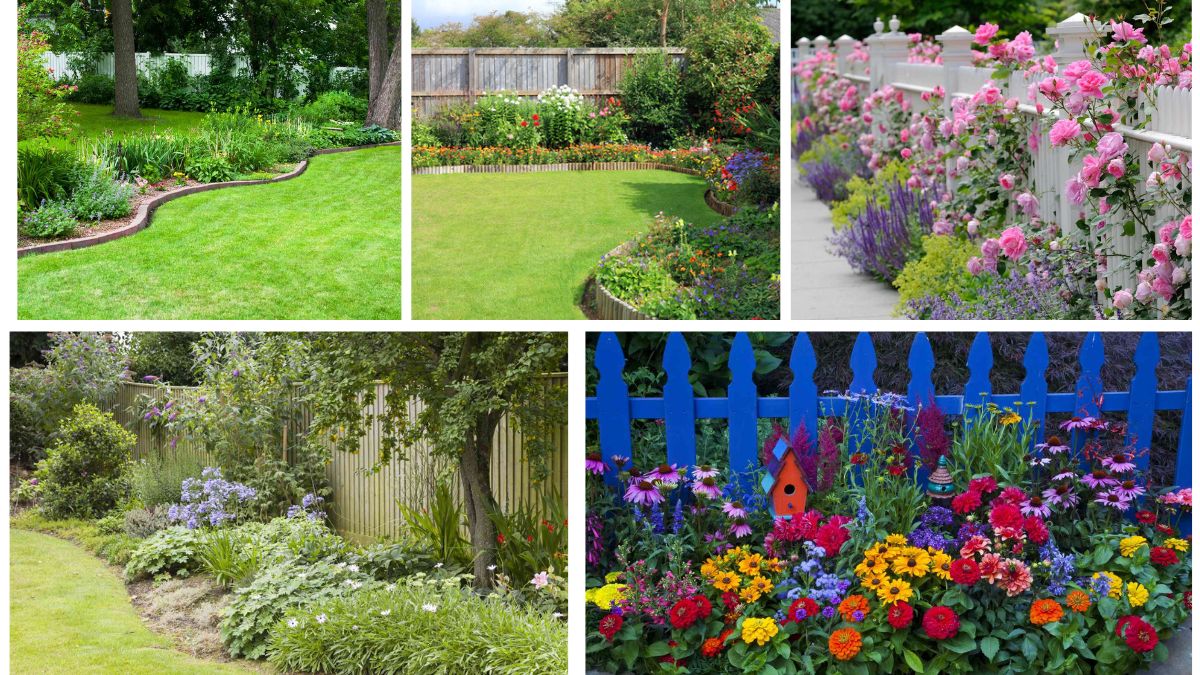A garden fence is more than just a boundary—it’s an opportunity to add charm, color, and structure to your outdoor space. One of the best ways to enhance a fence line is by creating beautiful flower beds that complement its design, attract pollinators, and create a cohesive landscape. Fence line flower beds not only improve the aesthetics of your garden but also provide functional benefits, such as screening unsightly areas, offering privacy, and supporting local wildlife.
This comprehensive guide explores five charming fence line flower bed ideas, complete with detailed planting tips, design principles, and maintenance advice to help gardeners elevate their outdoor spaces with style and creativity.
Introduction

Fence line flower beds transform ordinary fences into vibrant, inviting garden features. By thoughtfully selecting plants, arranging layers, and integrating textures and colors, you can turn a simple boundary into a showcase of natural beauty.
Key benefits of fence line flower beds include:
- Visual appeal: Adds depth, color, and texture along fence lines.
- Privacy: Tall or dense plantings can screen neighbors or streets.
- Wildlife support: Attracts birds, butterflies, and beneficial insects.
- Seasonal interest: Flowers can provide continuous blooms throughout the year with proper planning.
Below are five distinctive ideas to create stunning fence line flower beds that can elevate your garden design.
1. Vertical Climbing Flower Beds
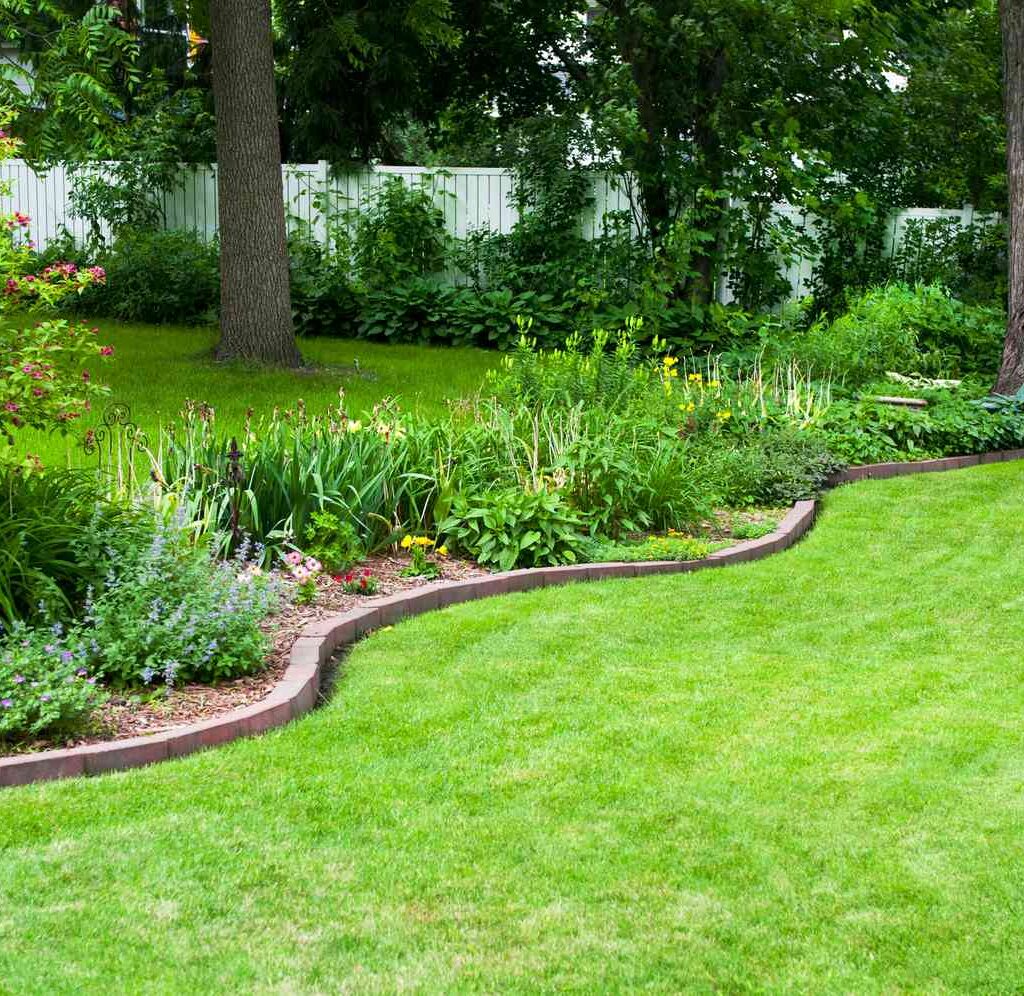
Vertical climbing flower beds make use of your fence as a living support structure, combining flowers and greenery for a dramatic effect.
Features
- Climbing plants such as Clematis, Sweet Pea, Morning Glory, or Climbing Roses can grow along trellises or directly on the fence.
- These plants add height, elegance, and color to an otherwise plain boundary.
Planting Tips
- Use a sturdy trellis or wire support to guide climbing plants.
- Choose sun-loving flowers if your fence line receives full sunlight, or shade-tolerant varieties for shaded fences.
- Combine fast-growing vines with slow-growing perennials at the base for layered visual interest.
Maintenance
- Prune climbing plants regularly to control growth and encourage blooms.
- Water deeply at the base to strengthen roots and support vertical growth.
Why It Works
Vertical flower beds maximize limited space while creating a natural screen. They also provide seasonal blooms and can be visually stunning against a simple wooden or wire fence.
2. Mixed Perennial Fence Beds
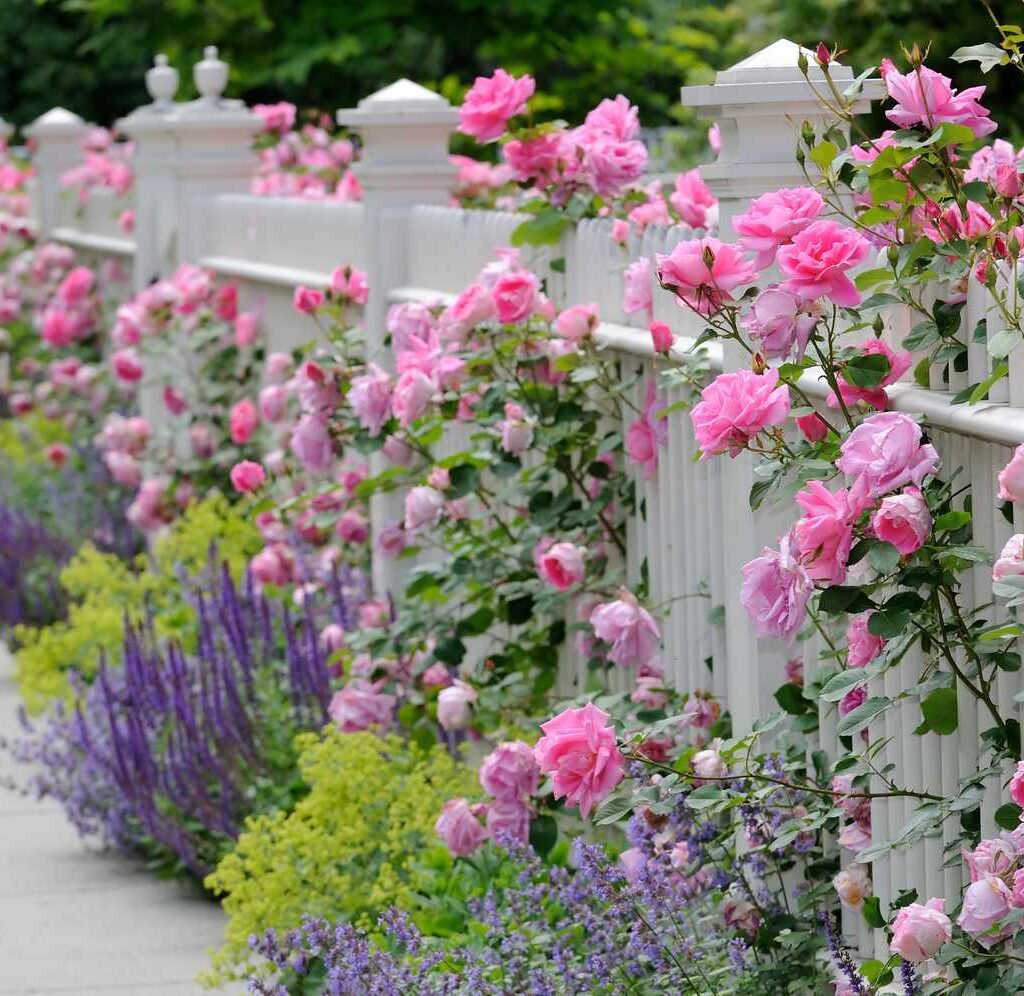
Perennial fence line beds offer long-lasting color and texture while minimizing annual replanting.
Features
- Choose a combination of tall perennials at the back (such as Delphinium, Hollyhock, or Sunflowers) and medium to low perennials in front (like Lavender, Salvia, or Coreopsis).
- Mixing different textures, colors, and flowering times ensures continuous blooms.
Planting Tips
- Prepare the soil with well-draining compost and organic matter to encourage strong root development.
- Plant taller perennials closer to the fence to avoid overshadowing smaller plants in front.
- Stagger flowering times to maintain color from spring through fall.
Maintenance
- Deadhead faded blooms to extend flowering periods.
- Mulch to retain soil moisture and reduce weed growth.
- Fertilize lightly with a balanced fertilizer to support vigorous growth.
Why It Works
Perennial fence line beds are low-maintenance and long-lasting, offering structure, texture, and a wide range of colors to enhance your garden throughout the growing season.
3. Pollinator-Friendly Fence Line Beds
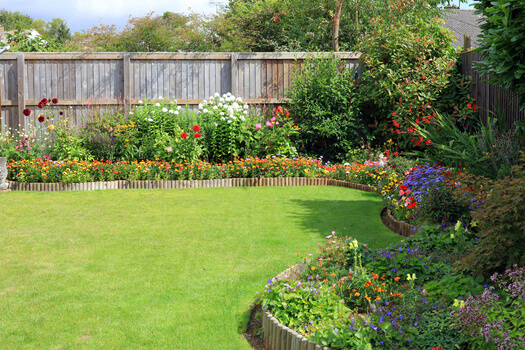
Creating a pollinator-friendly flower bed not only beautifies your fence line but also supports bees, butterflies, and other beneficial insects.
Features
- Incorporate flowers rich in nectar and pollen, such as Echinacea, Bee Balm, Zinnias, and Marigolds.
- Mix different flower heights and bloom times to provide continuous forage.
Planting Tips
- Group similar plants together to create visual impact and attract pollinators efficiently.
- Plant in sunny locations, as pollinator flowers thrive in sunlight.
- Avoid pesticides to protect pollinators and beneficial insects.
Maintenance
- Deadhead spent flowers to encourage repeat blooming.
- Water consistently during dry spells but avoid overwatering.
- Divide overcrowded plants every 2–3 years to maintain vigor.
Why It Works
Pollinator-friendly fence line beds combine garden beauty with ecological benefits, creating a lively and interactive landscape that supports biodiversity.
4. Color-Themed Fence Line Beds
A color-themed fence line bed creates a cohesive and visually striking garden feature.
Features
- Choose one or two primary colors or complementary hues for a unified look.
- Examples include purple and white, pink and red, or yellow and orange combinations.
- Include varieties of foliage to add depth and contrast.
Planting Tips
- Plan the color sequence before planting for maximum visual impact.
- Use a mix of flowering heights to maintain interest along the entire fence line.
- Include evergreen shrubs or foliage plants for year-round structure.
Maintenance
- Prune and trim plants to maintain tidy edges along the fence line.
- Fertilize according to plant requirements to keep blooms vibrant.
- Rotate annual flowers each year to refresh the color scheme.
Why It Works
Color-themed beds provide visual harmony and elevate the garden’s design by emphasizing intentional beauty and artistic arrangement.
5. Cottage-Style Fence Line Beds
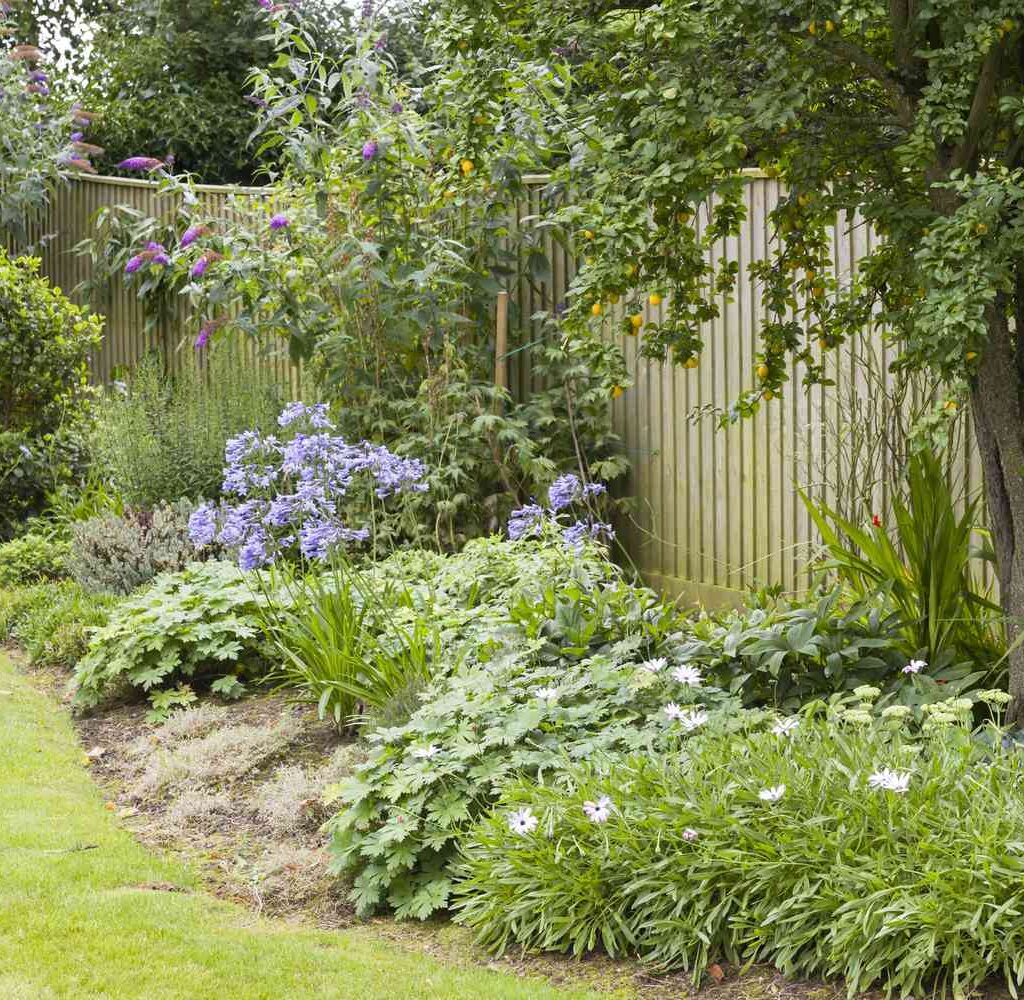
Cottage-style beds evoke a relaxed, romantic, and whimsical garden aesthetic.
Features
- Mix flowers, herbs, and small shrubs in an informal, natural arrangement.
- Common choices include Lavender, Foxgloves, Sweet Alyssum, and Pansies.
- Integrate climbing plants like Honeysuckle or Jasmine for added charm.
Planting Tips
- Let plants grow in a slightly free-form pattern rather than strictly symmetrical.
- Combine fragrant flowers and herbs to stimulate the senses.
- Include small decorative elements like garden ornaments or stepping stones for added character.
Maintenance
- Deadhead and trim plants to encourage healthy growth without rigid structure.
- Water deeply but avoid excessive moisture to prevent root rot.
- Mulch with organic materials to retain soil moisture and enrich the soil.
Why It Works
Cottage-style beds create a cozy, inviting atmosphere while maximizing diversity in plant selection. This approach works particularly well along fences that frame garden paths or seating areas.
Conclusion
Fence line flower beds are an effective way to enhance the beauty, functionality, and ecological value of any garden. Whether you choose vertical climbers, mixed perennials, pollinator-friendly plants, color-themed arrangements, or charming cottage-style designs, careful planning and maintenance can transform a simple fence into a stunning garden feature.
By selecting the right plants, considering bloom times, layering textures, and following proper care practices, gardeners can create long-lasting, visually appealing fence line flower beds that elevate both the aesthetic and environmental quality of their outdoor space.
With these five ideas, anyone—from beginners to seasoned gardeners—can design fence line flower beds that are both practical and picturesque, turning an ordinary boundary into an extraordinary garden highlight.
